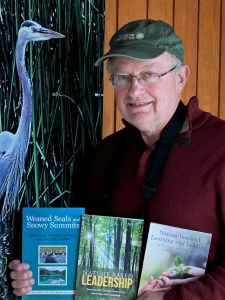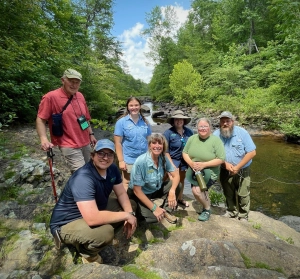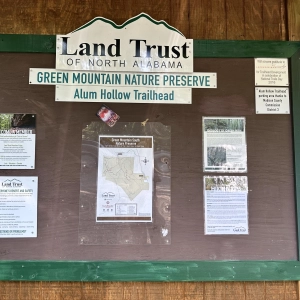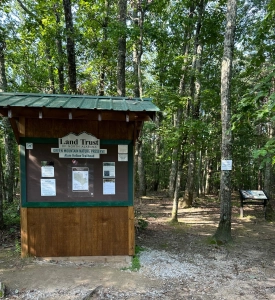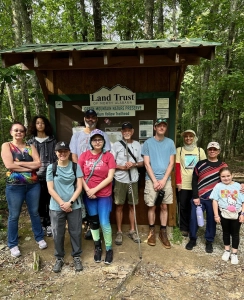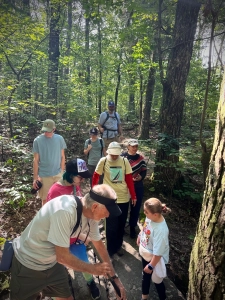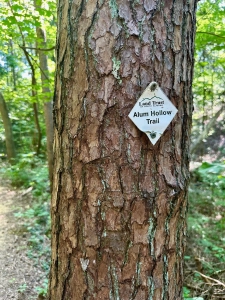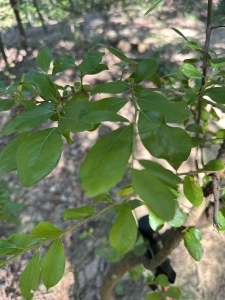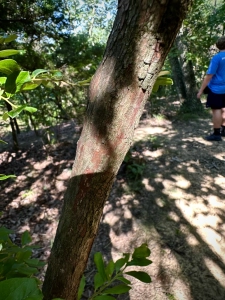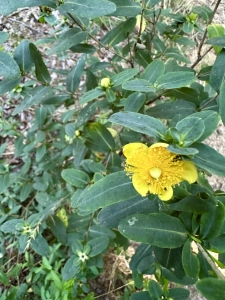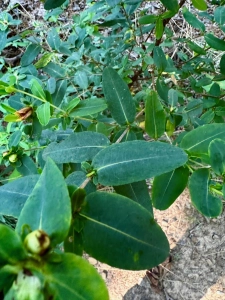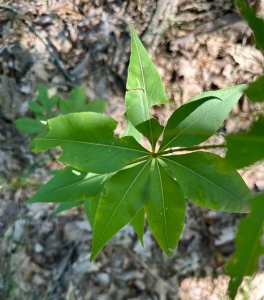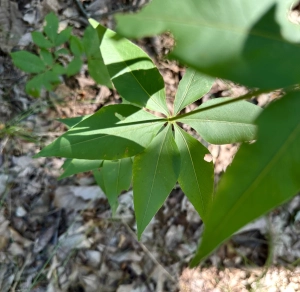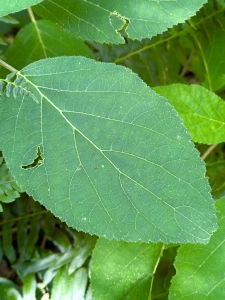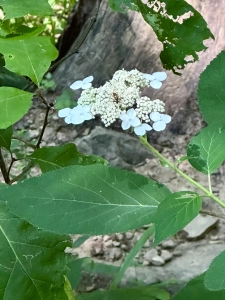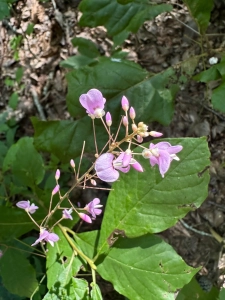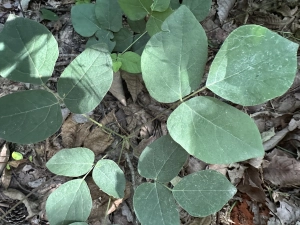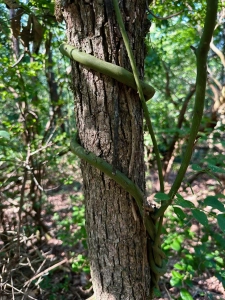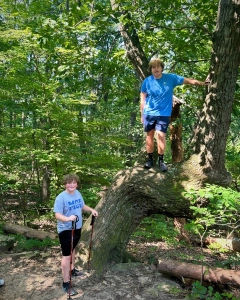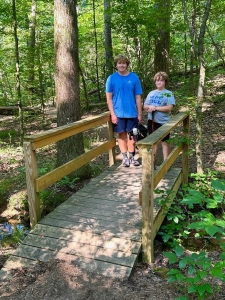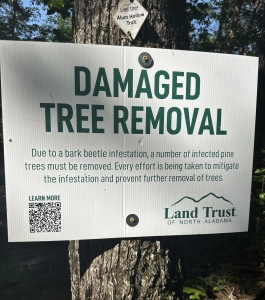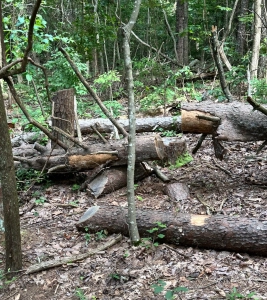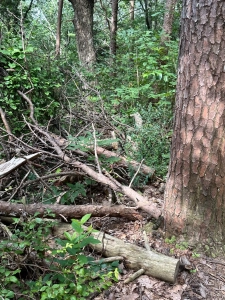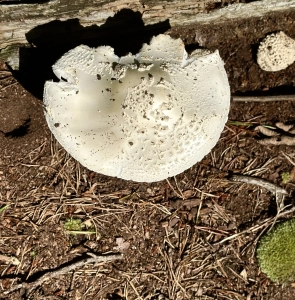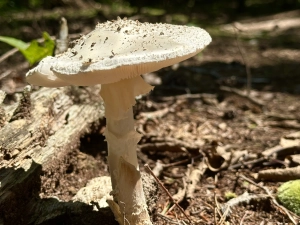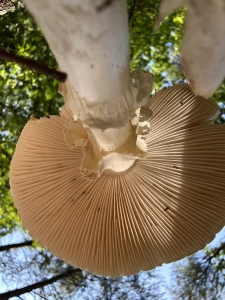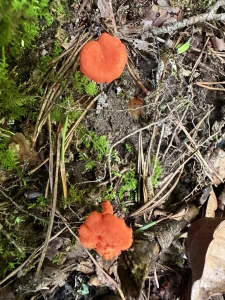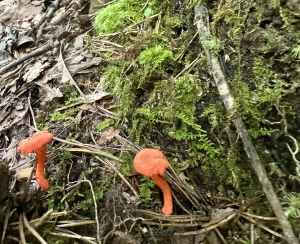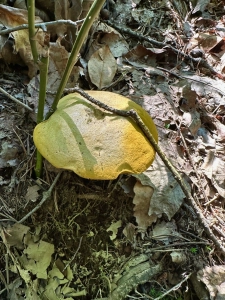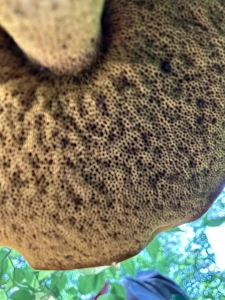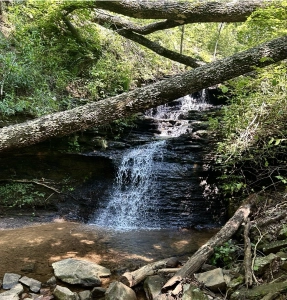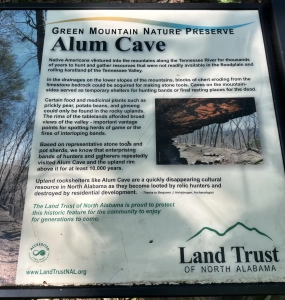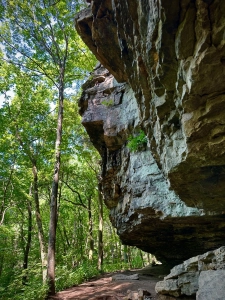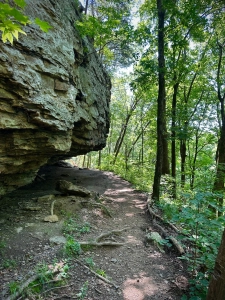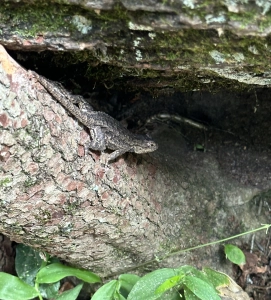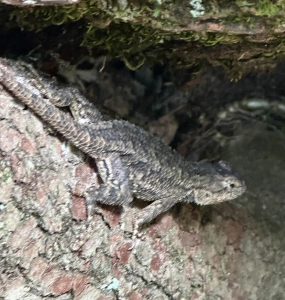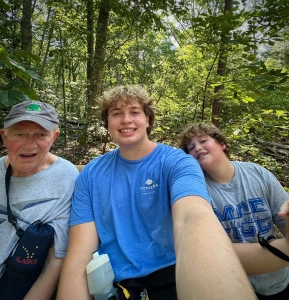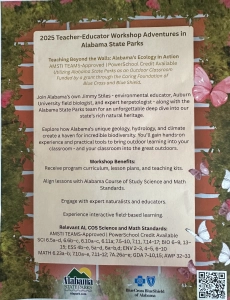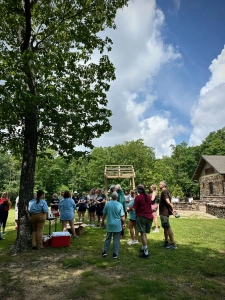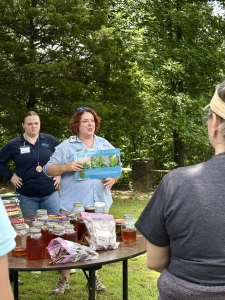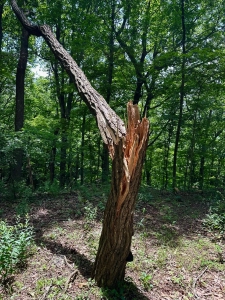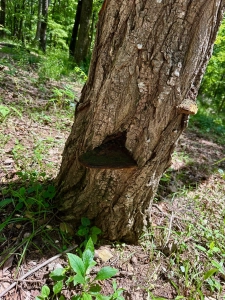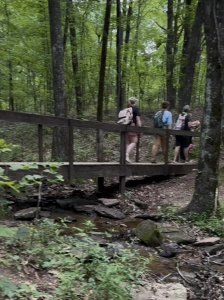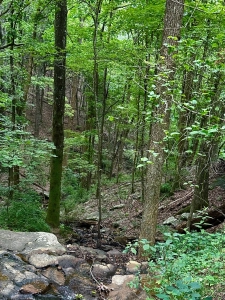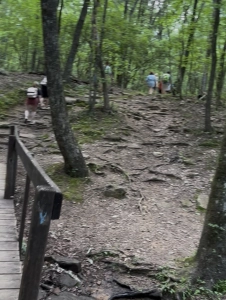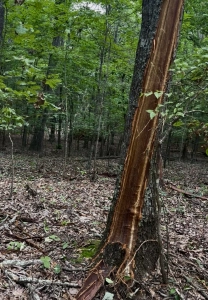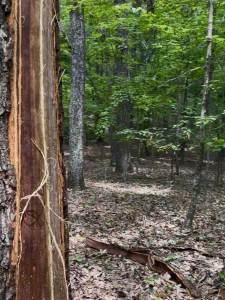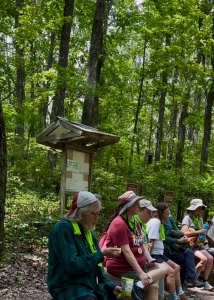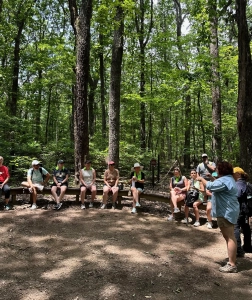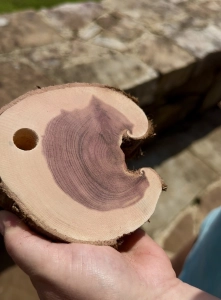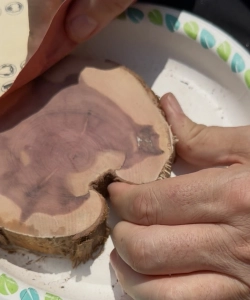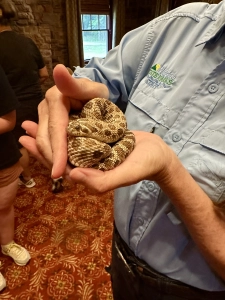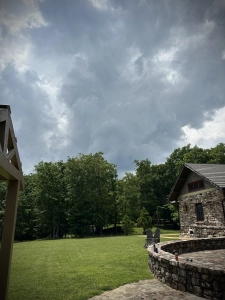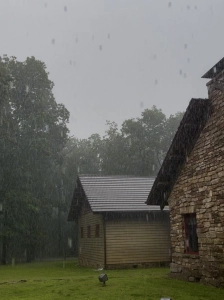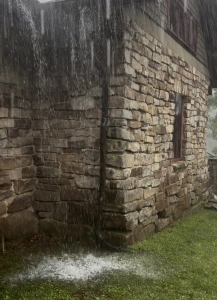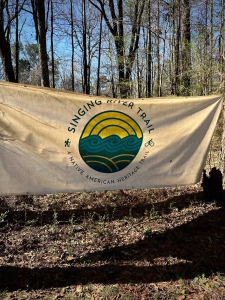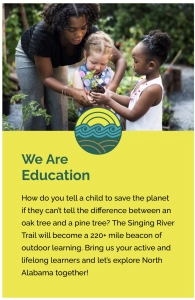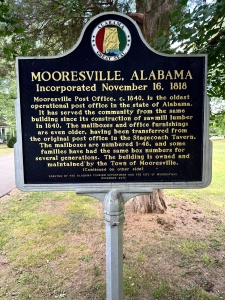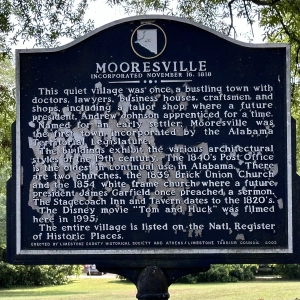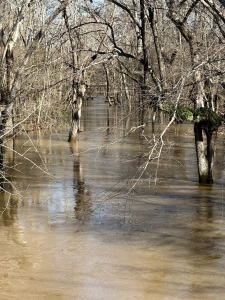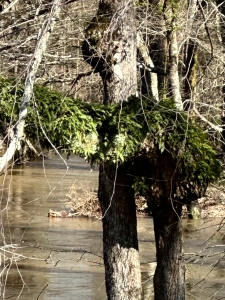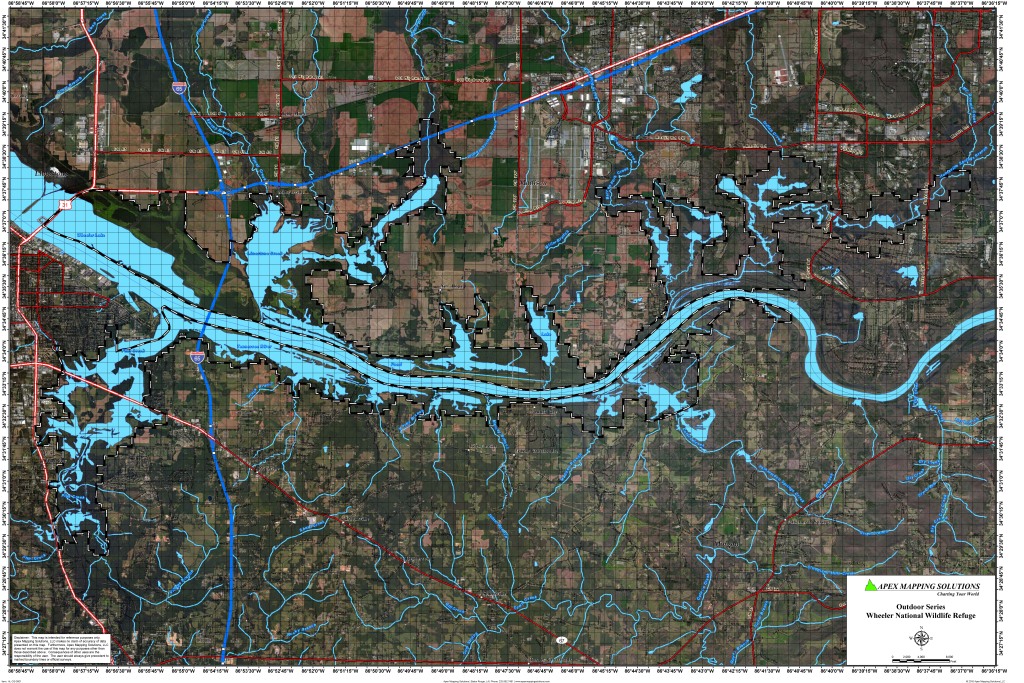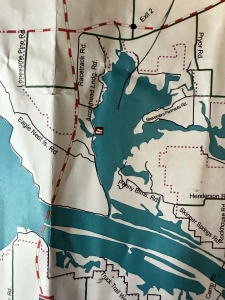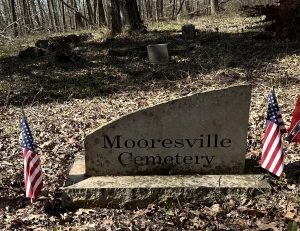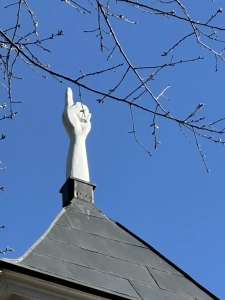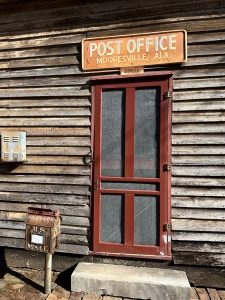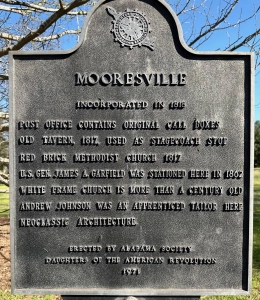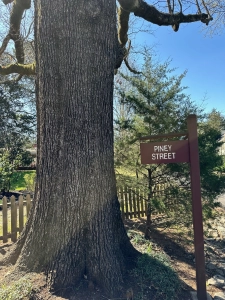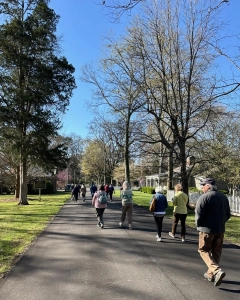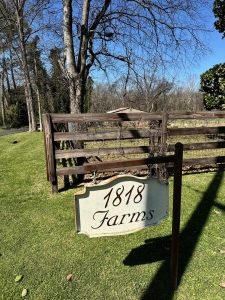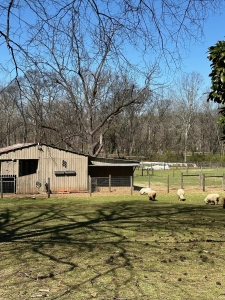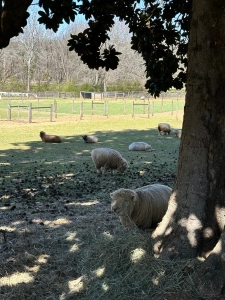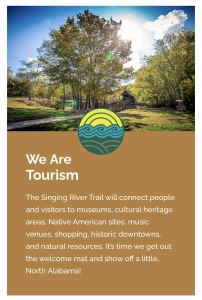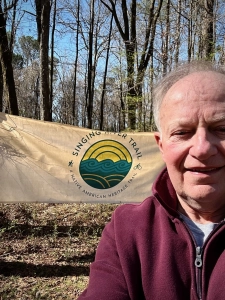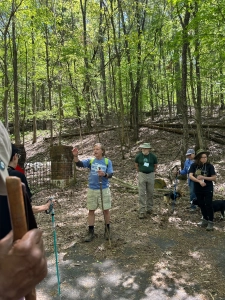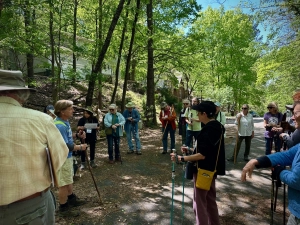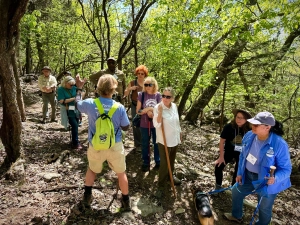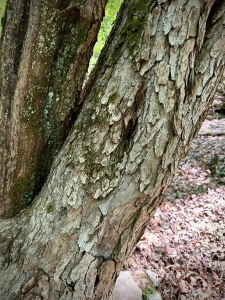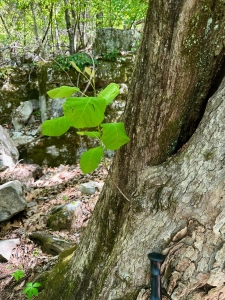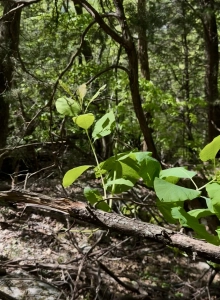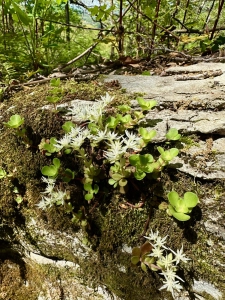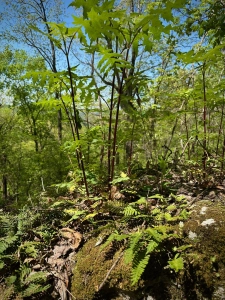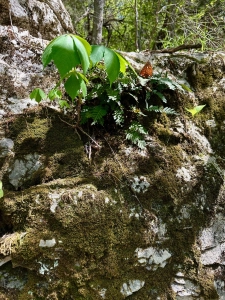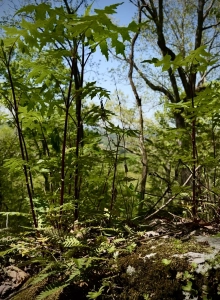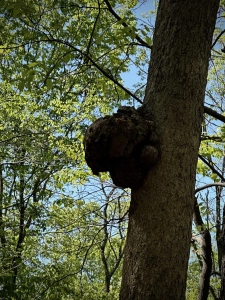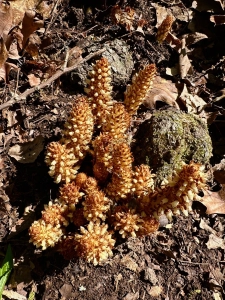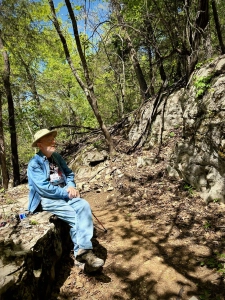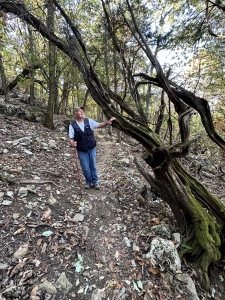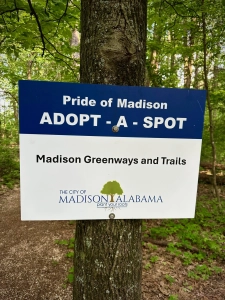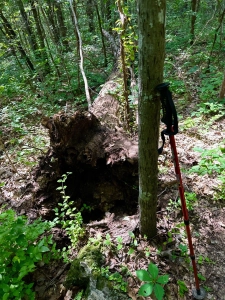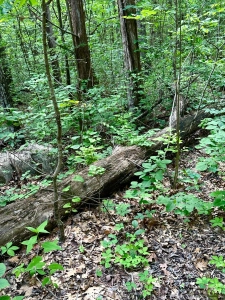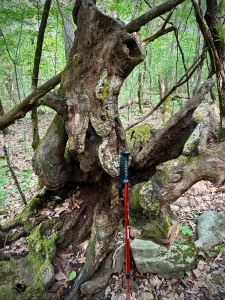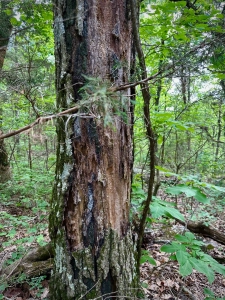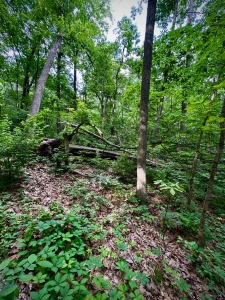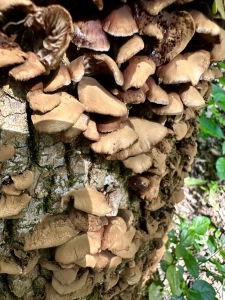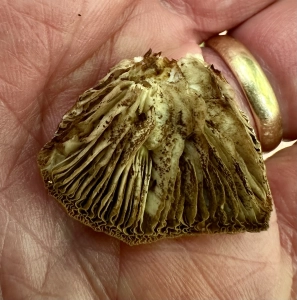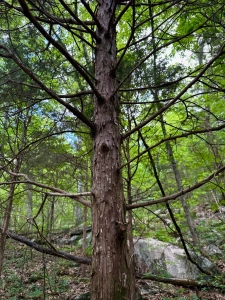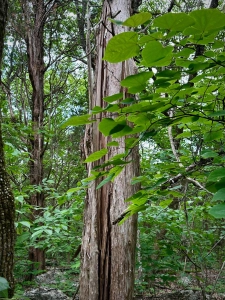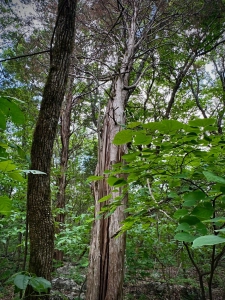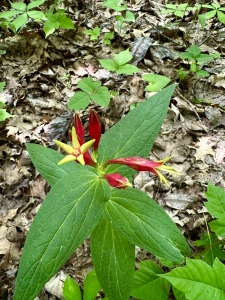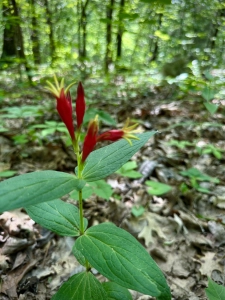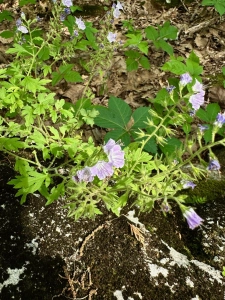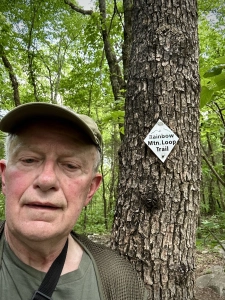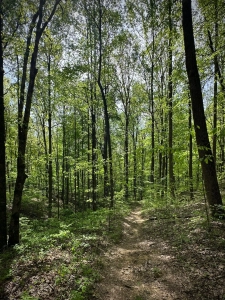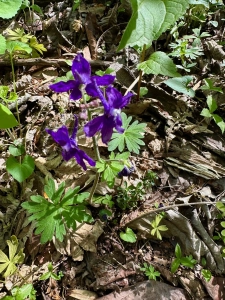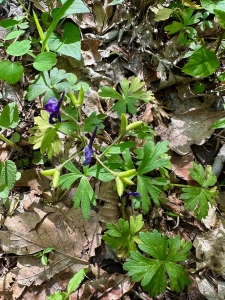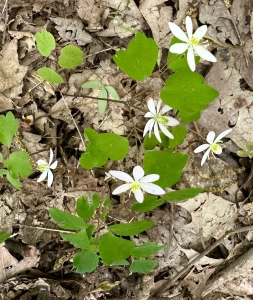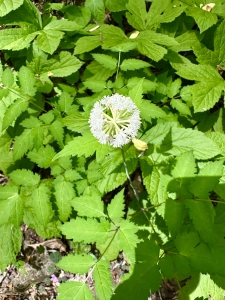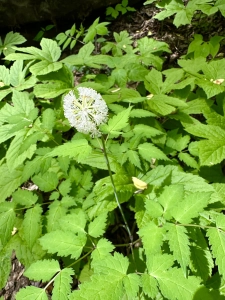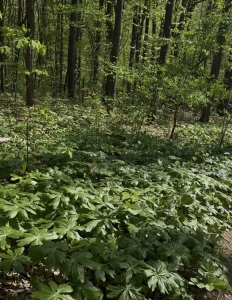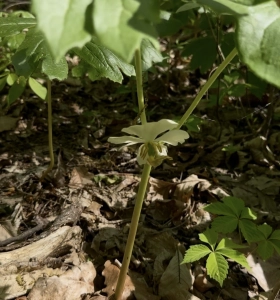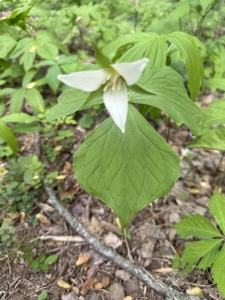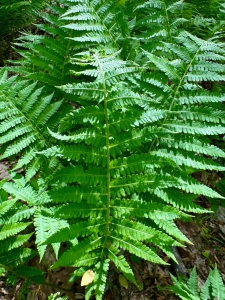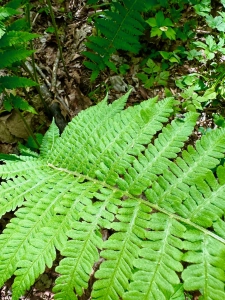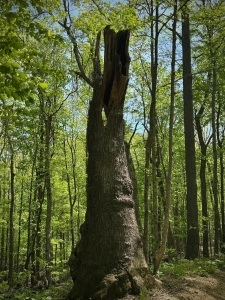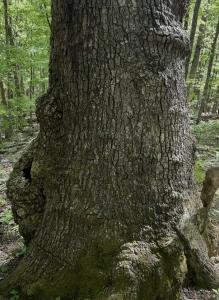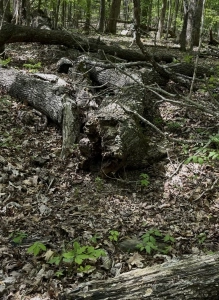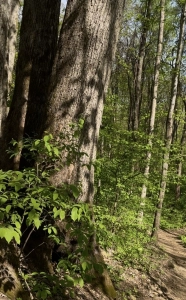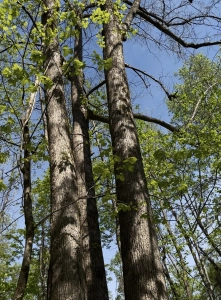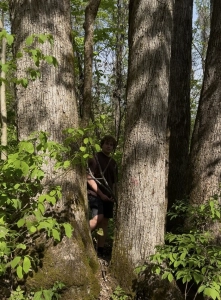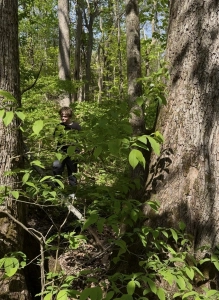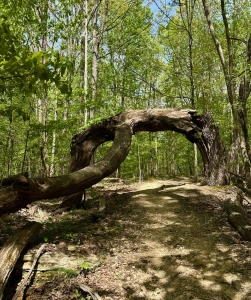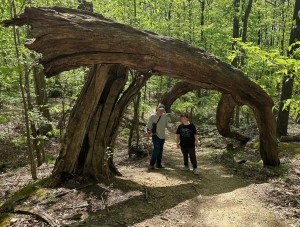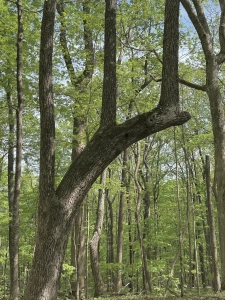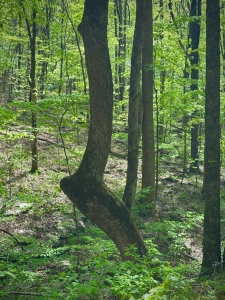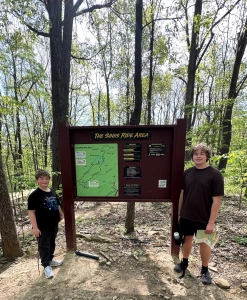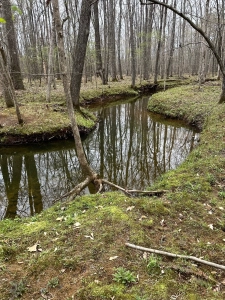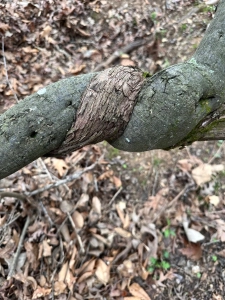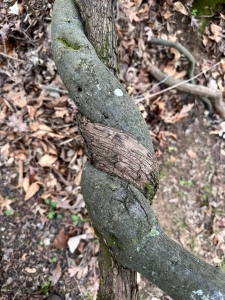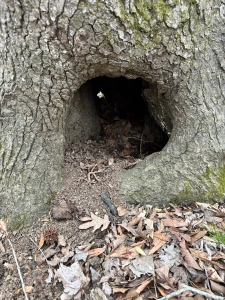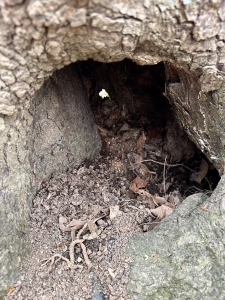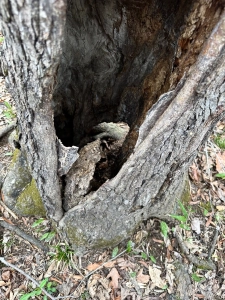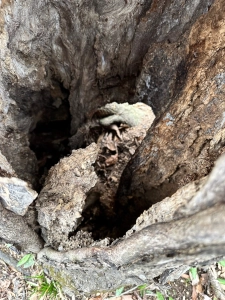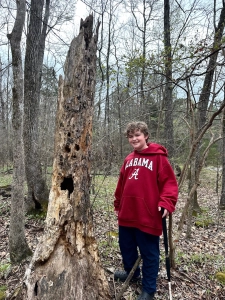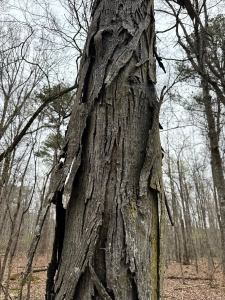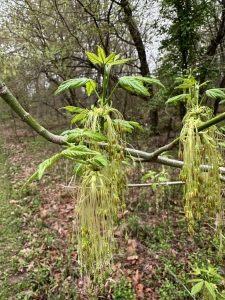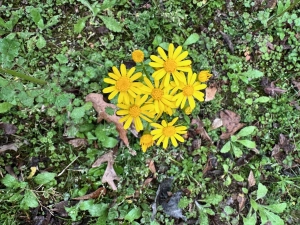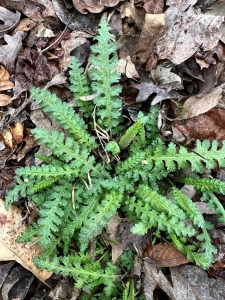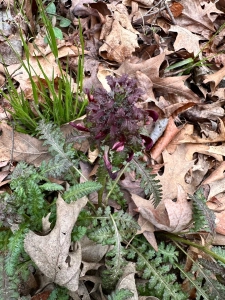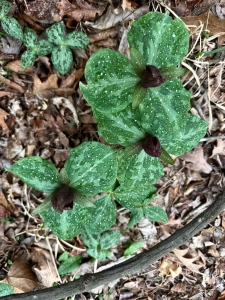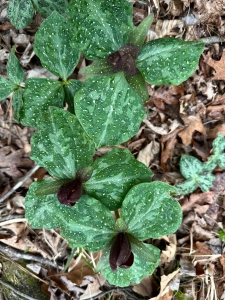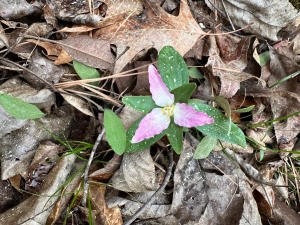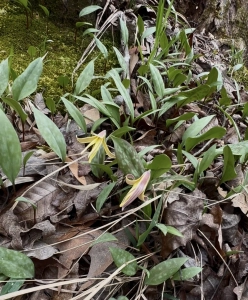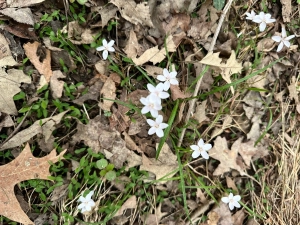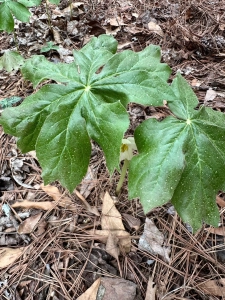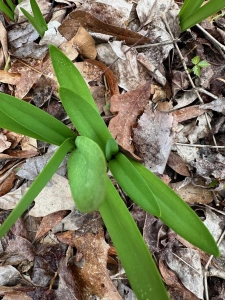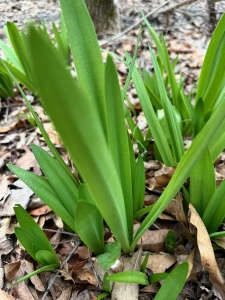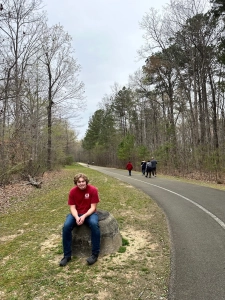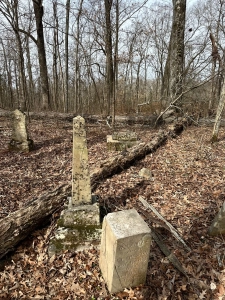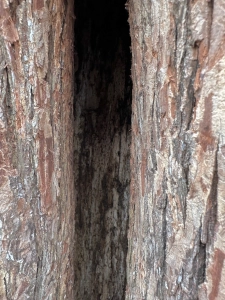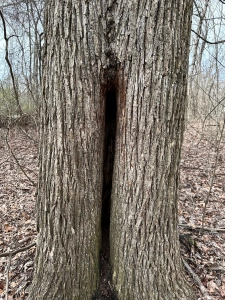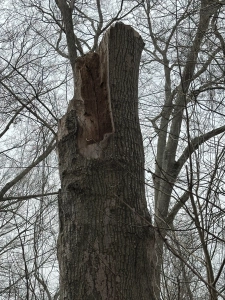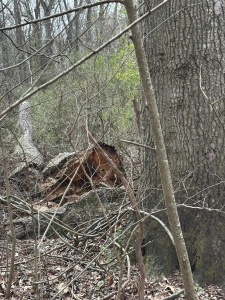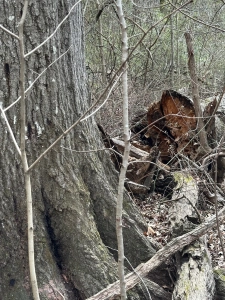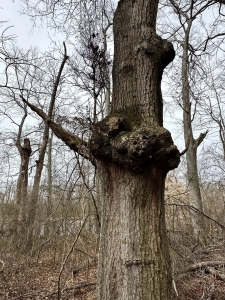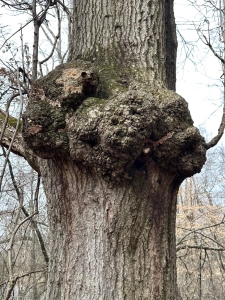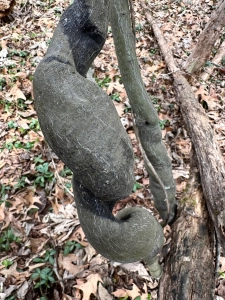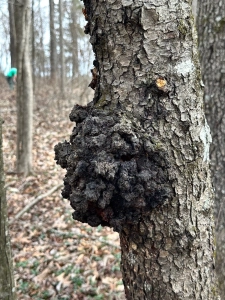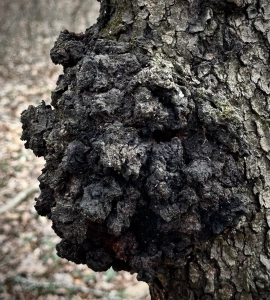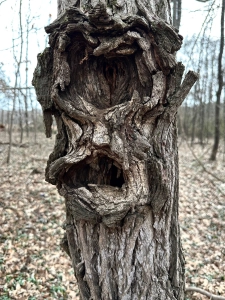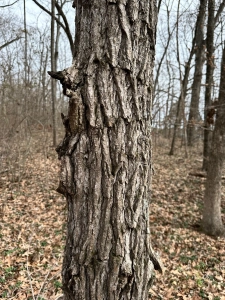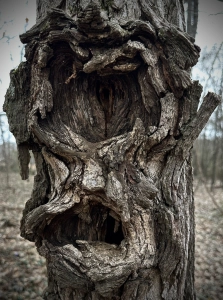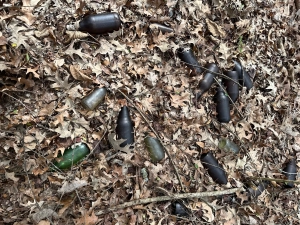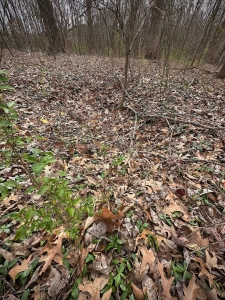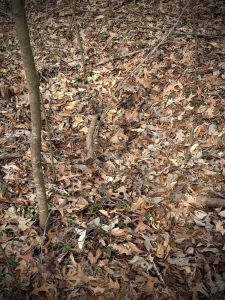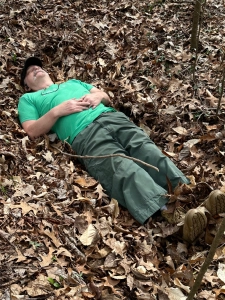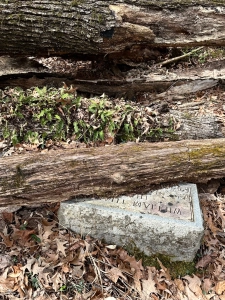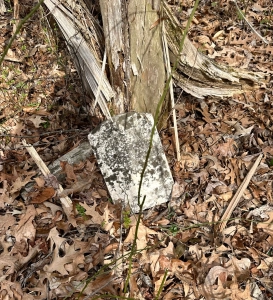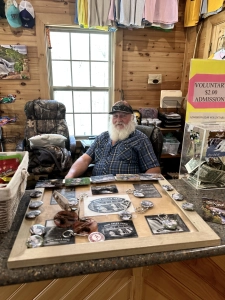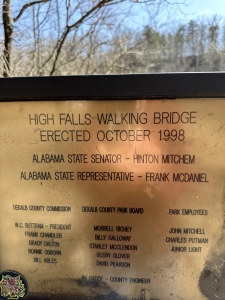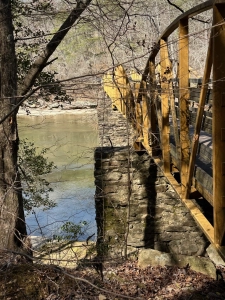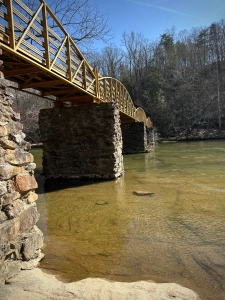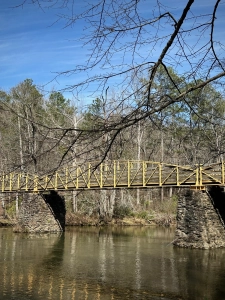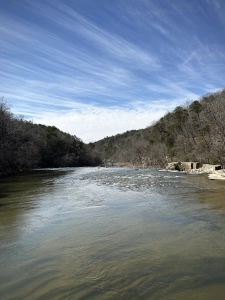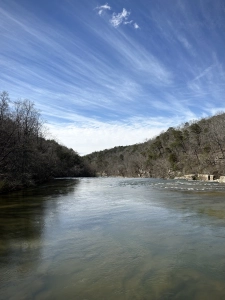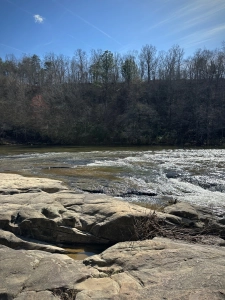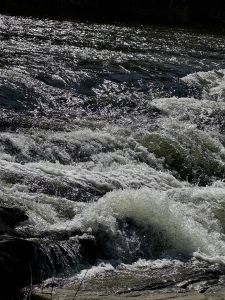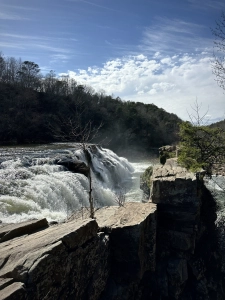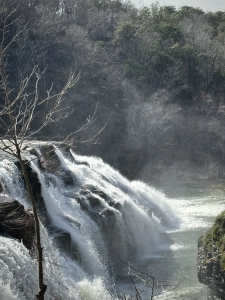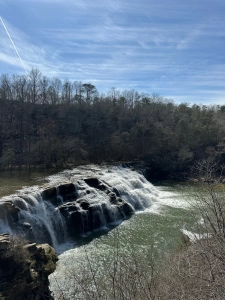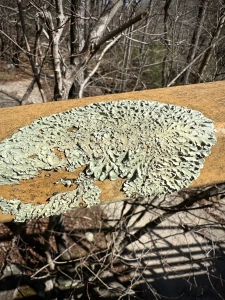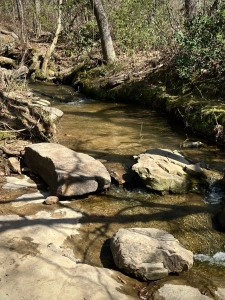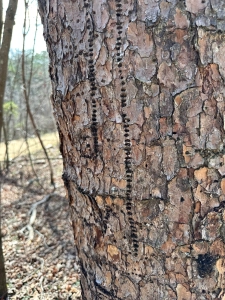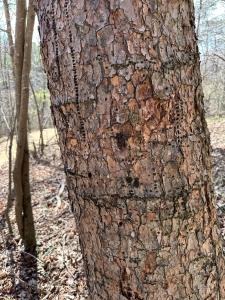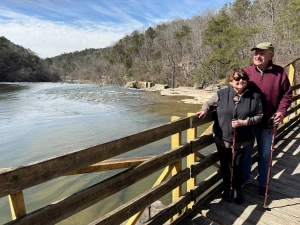Outdoor Alabama Adventures Teacher Workshop at DeSoto State Park
On Saturday, July 12, 2025, I assisted with the Alabama State Parks Outdoor Alabama Adventures Education Workshop at DeSoto State Park, attended by 25 teachers and educators. Funded by BlueCross BlueShield of Alabama, the program team will present the full-day program at five state parks from June 17 to August 9. I am privileged to participate here at DeSoto and on August 9, at Joe Wheeler. The program team and participating teacher-educators brought passion, knowledge, and commitment to the task and joy of learning. Join me on a virtual journey with the participants. I offer my limited narration, supplemented by quotes from noted conservationists and Nature educators.
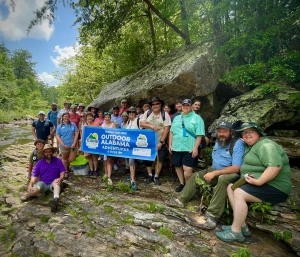
Time spent in nature is not leisure time; it’s an essential investment in our children’s health (and also, by the way, in our own). (Richard Louv)
The workshop flyer promised Teaching Beyond the Walls: Alabama Ecology in Action… You’ll gain hands-on experience and practical tools to bring outdoor learning into your classroom…and transport your classroom into the great outdoors.
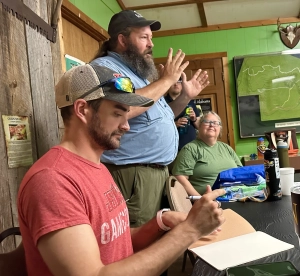
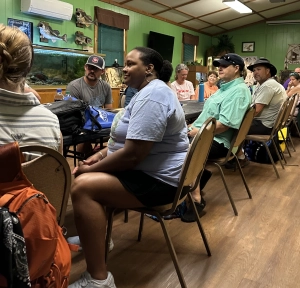
I recorded a 42-second video during Jimmy Stiles’ introductory indoor session
Even the snake paid rapt attention to Jimmy, a real snake charmer!
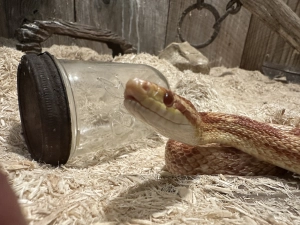
Unlike television, nature does not steal time; it amplifies it. (Louv)
DeSoto State Park Naturalist, Brittney Hughes, introduced us to the first of several sandstone glades we would visit.
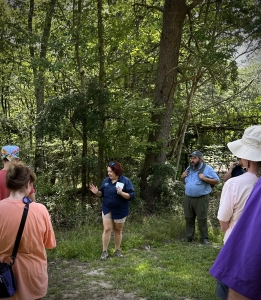
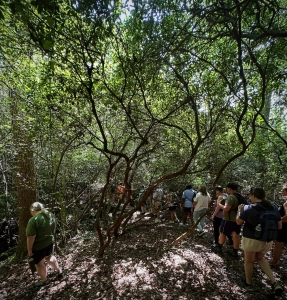
What’s important is that children have an opportunity to bond with the natural world, to learn to love it and feel comfortable in it, before being asked to heal its wounds. (David Sobel)
Northeast Alabama District Naturalist, Eric Cline, led us through a mountain laurel thicket. I recorded this 57-second video in the laurel.
We still do not know one thousandth of one percent of what nature has revealed to us. (Albert Einstein)
Life and death are inseparable co-conspirators in our vibrant forests, where the carbon cycle encompasses the emergence of new life and the decomposition of old. The Coker’s amanita mushroom is one of the many forest components hiding in plain site on the forest floor.
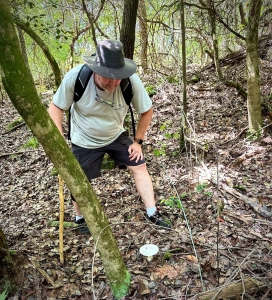
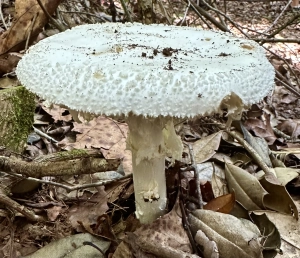
I have no special talent. I am only passionately curious. (Einstein)
Whether a white mushroom or a glossy-green galax plant, Nature’s mysteries and gems reach out to those of us with passion for learning more, and spreading the word of informed and responsible Earth stewardship.
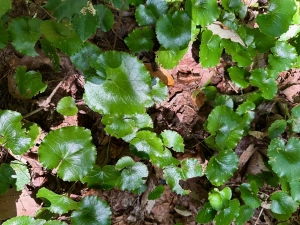
In every walk in nature one receives far more than he seeks. (Muir)
Nature understanding and enjoyment depend upon curious minds and deep imagination. Reflection (both optical and mental) amplifies the value of teaching and learning outdoors,
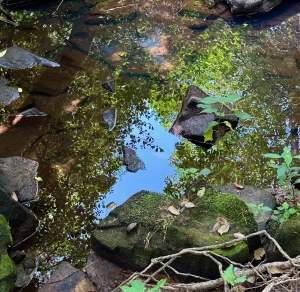
Logic will get you from A to B. Imagination will take you everywhere. (Einstein)
This 40-second video takes us to the sandstone ledge we explored on our morning foray.
A life without contact with nature is not worth living. (Louv)
I marvel at Nature’s mysteries. I suppose that equations may exist quantifying the mechanisms at work creating such ledge shelters. Regardless, I am grateful for their cool and dry shade.
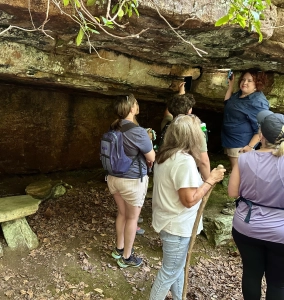
Everybody needs beauty as well as bread, places to play and pray in, where Nature may heal and cheer and give strength to body and soul alike. (Muir)
We ascended from the dark ledge shelter to the baking glade overlooking the canyon.
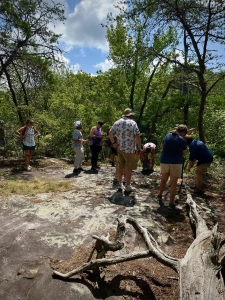
Nature-deficit disorder describes the human costs of alienation from nature, among them: diminished use of the senses, attention difficulties, and higher rates of physical and emotional illnesses. The disorder can be detected in individuals, families, and communities. (Louv)
I recorded this 48-second video at the canyon rim sandstone glade
Look deep into nature, and then you will understand everything better. (Einstein)
Sandstone glades are harsh, sun-baked, and shallow-soiled. Some mosses, lichens, and diminuitive plants thrive. Virginia pine is not one of those specialized plants, yet this one germinated in a sandstone crevice and valiantly clings to life, persisting against all odds.
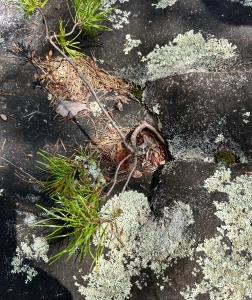
When we contemplate the whole globe as one great dewdrop, striped and dotted with continents and islands, flying through space with other stars all singing and shining together as one, the whole universe appears as an infinite storm of beauty. (Muir)
Eager learners and Nature enthusiasts, bare rock, surrounding trees, and a fair-summer sky open minds, hearts, souls, and spirit to embrace the World and its infinite storm of beauty.
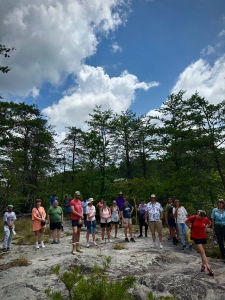
A river or stream is a cycle of energy from sun to plants to insects to fish. It is a continuum broken only by humans. (Aldo Leopold)
We dropped from the canyom rim to the stream.
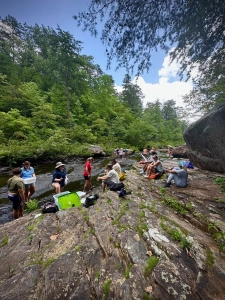
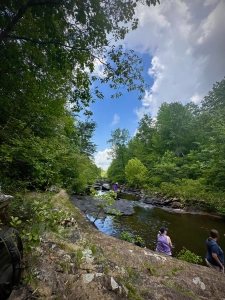
Environment-based education produces student gains in social studies, science, language arts, and math; improves standardized test scores and grade-point averages; and develops skills in problem-solving, critical thinking, and decision-making. (Louv)
I recorded this 60-second video on the floor of the canyon.
Joy in looking and comprehending is nature’s most beautiful gift. (Einstein)
I contrast the sublime afternoon in the Little River Canyon to the pounding turbulence of the surging river at flood. Someone may ask, “What’s it like on the canyon floor?” Like everything and place in Nature, it depends!
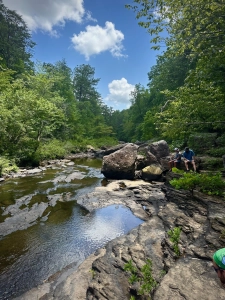
I view Nature through lenses, my own, and the filters of others like Muir, Einstein, da Vinci, Louv, Leopold, and Sobel. When I formulate a profound insight and express its sagacity in prose, I discover that others have birthed the muse…and stated it far more eloquently and succinctly than I.
What induces you, oh man, to depart from your home in town, to leave parents and friends, and go to the countryside over mountains and valleys, if it is not for the beauty of the world of nature? (da Vinci)
July 24, 2025 Note: I’m reading Landon Y. Jones’ The Essential Lewis and Clark, a condensed collection of the Captains’ journal entries from their Journey of Discovery. Fifteen months into their quest (August 18, 1805), Meriwether Lewis wrote:
This day I completed my 31st year, and I conceived that I had in all human probability now existed about half the period which I am to remain in this sublunary world. I reflected that I had as yet done but little, very little, indeed, to further the hapiness of the human race, or to advance the information of the succeeding generation. I viewed with regret the many hours I have spent in indolence, and now sorely feel the want of that information which those hours would have given me had they been judiciously expended. But since they are past and cannot be recalled, I dash from me the gloomy thought, and resolve in future, to redouble my exertions and at least endeavor to promote those two primary objects of human existence, by giving them the aid of that portion of talents which nature and fortune have bestowed on me; or in future, to live for mankind, as I have heretofore lived for myself.
I recently completed my 74th year in this sublunary world. I often reflect, with no small degree of melancholy, that I have as yet done but little, very little, indeed. However, I take solace from Robert Louis Stevenson (1850-1894):
Don’t judge each day by the harvest you reap but by the seeds that you plant.
I am a sower of seeds. Perhaps one or two will take root.
Alabama State Parks Foundation
Thoughts and Reflections
I offer these observations:
- If we want children to flourish, to become truly empowered, let us allow them to love the earth before we ask them to save it. (David Sobel)
- Look deep into nature and then you will understand everything better. (Albert Einstein)
- Nature education is a process of discovery, illumination, inspiration, and encouragement. (Steve Jones)
Inhale and absorb Nature’s elixir. May Nature Inspire, Inform, and Reward you!
Note: All blog post images created & photographed by Stephen B. Jones unless otherwise noted. Please circulate images with photo credit: “©2025 Steve Jones, Great Blue Heron LLC. All Rights Reserved.”
I am available for Nature-Inspired Speaking, Writing, and Consulting — contact me at steve.jones.0524@gmail.com
Reminder of my Personal and Professional Purpose, Passion, and Cause
If only more of us viewed our precious environment through the filters I employ. If only my mission and vision could be multiplied untold orders of magnitude:
Mission: Employ writing and speaking to educate, inspire, and enable readers and listeners to understand, appreciate, and enjoy Nature… and accept and practice Earth Stewardship.
Vision:
- People of all ages will pay greater attention to and engage more regularly with Nature… and will accept and practice informed and responsible Earth Stewardship.
- They will see their relationship to our natural world with new eyes… and will understand more clearly their Earth home.
Tagline/Motto: Steve (Great Blue Heron) encourages and seeks a better tomorrow through Nature-Inspired Living!
Steve’s Four Books
I wrote my books Nature Based Leadership (2016), Nature-Inspired Learning and Leading (2017), Weaned Seals and Snowy Summits: Stories of Passion for Place and Everyday Nature (2019; co-authored with Dr. Jennifer Wilhoit), and Dutton Land & Cattle: A Land Legacy Story (2023) to encourage all citizens to recognize and appreciate that every lesson for living, learning, serving, and leading is either written indelibly in or is powerfully inspired by Nature. All four of my books present compilations of personal experiences expressing my deep passion for Nature. All four books offer observations and reflections on my relationship with the natural world… and the broader implications for society. Order any from your local indie bookstore, or find them on IndieBound or other online sources such as Amazon and LifeRich.
I began writing books and Posts for several reasons:
- I love hiking and exploring Nature
- I see images I want to (and do) capture with my trusty iPhone camera
- I enjoy explaining those images — an educator at heart
- I don’t play golf!
- I do love writing — it’s the hobby I never needed when my career consumed me
- Judy suggested my writing is in large measure my legacy to our two kids, our five grandkids, and all the unborn generations beyond
- And finally, perhaps my books and Blogs could reach beyond family and touch a few other lives… sow some seeds for the future
